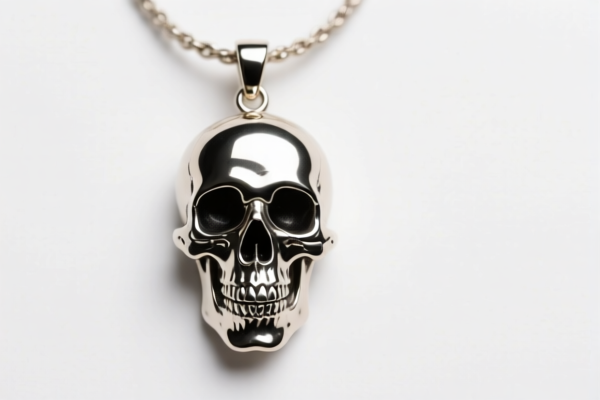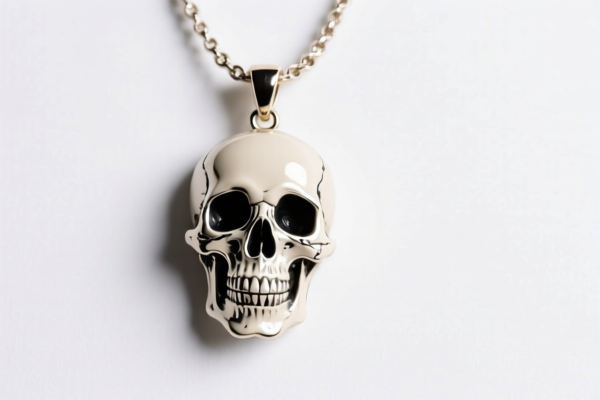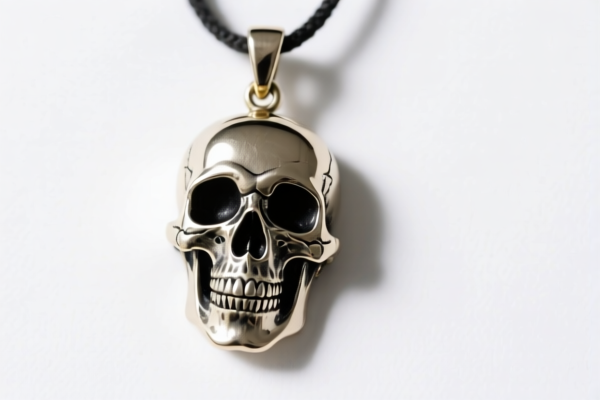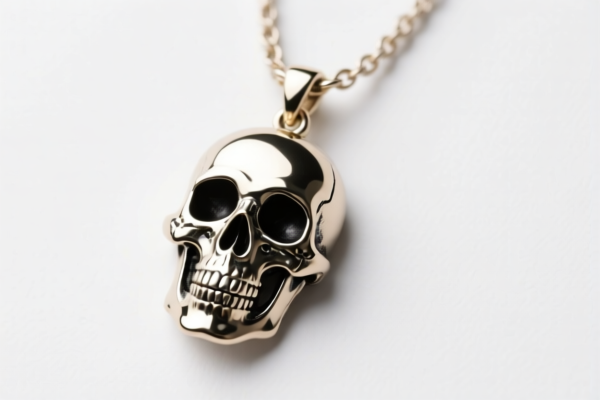| HS Code | Official Doc | Tariff Rate | Origin | Destination | Effective Date |
|---|---|---|---|---|---|
| 7113115000 | Doc | 42.5% | CN | US | 2025-05-12 |
| 7113195045 | Doc | 43.0% | CN | US | 2025-05-12 |
| 7115906000 | Doc | 59.0% | CN | US | 2025-05-12 |
| 7115900590 | Doc | 55.0% | CN | US | 2025-05-12 |
| 9503000090 | Doc | 30.0% | CN | US | 2025-05-12 |
| 7117199000 | Doc | 48.5% | CN | US | 2025-05-12 |
| 7117909000 | Doc | 48.5% | CN | US | 2025-05-12 |
| 4911998000 | Doc | 37.5% | CN | US | 2025-05-12 |
| 4911996000 | Doc | 37.5% | CN | US | 2025-05-12 |
| 4908900000 | Doc | 37.5% | CN | US | 2025-05-12 |
| 4908100000 | Doc | 37.5% | CN | US | 2025-05-12 |




Skeleton Pendant
A skeleton pendant is a piece of jewelry featuring a skeletal design, typically worn as a necklace. These pendants vary widely in style, material, and intended meaning.
Material
- Metal: Common metals include sterling silver, stainless steel, brass, and alloys. Gold and platinum versions exist, often as higher-end options.
- Bone: Historically and in some contemporary designs, actual animal bones (ethically sourced or antique) are used.
- Resin/Acrylic: These materials allow for detailed and colorful designs, often mimicking bone appearance.
- Glass: Glass pendants can feature skeletal imagery within the glass itself or as surface decorations.
- Other: Materials like wood, stone, and polymer clay are also utilized.
Purpose & Symbolism
The meaning behind a skeleton pendant is highly individual and culturally dependent. Common interpretations include:
- Memento Mori: A historical reminder of mortality, reflecting on the inevitability of death.
- Rebellion/Alternative Style: Often associated with gothic, punk, and alternative subcultures.
- Day of the Dead (Día de Muertos): In some cultures, especially Mexican traditions, skeleton pendants represent honoring and remembering deceased loved ones.
- Personal Expression: A statement of individuality, representing a fascination with anatomy, the macabre, or a unique aesthetic.
- Spiritual/Occult: Can represent transformation, the cycle of life and death, or connections to the spirit world.
Function
The primary function is aesthetic – to serve as a decorative piece of jewelry. Beyond this, they can act as:
- Personal talisman: Some wear them for perceived protective or symbolic properties.
- Conversation starter: Due to their striking appearance, they often attract attention and invite discussion.
Usage Scenarios
- Everyday wear: Smaller, more subtle designs can be incorporated into daily outfits.
- Special events: More elaborate pendants may be worn for themed parties, concerts, or as part of a specific style.
- Costume/Cosplay: Frequently used as part of gothic, Halloween, or Day of the Dead costumes.
- Collections: Some individuals collect skeleton pendants in various styles and materials.
Common Types
- Full Skeleton: Depicts a complete skeletal structure.
- Skull Pendant: The most common type, focusing solely on the skull. Variations include realistic, stylized, and cartoonish designs.
- Ribcage Pendant: Features a ribcage design, often with a heart or other symbol within.
- Hand/Finger Bone Pendants: Focus on skeletal hands or individual finger bones.
- Articulated Pendants: Pendants with moving joints, allowing for a more dynamic appearance.
- Vintage/Antique Pendants: Often made of silver or gold, reflecting historical styles and craftsmanship.
- Custom Pendants: Designed and created to specific specifications, often incorporating unique materials or symbolism.
The declared goods are a skeleton pendant, which is a piece of jewelry designed for personal adornment. It is likely constructed from precious metal or metal clad with precious metal, intended to be worn as a necklace or bracelet component.
The following HS codes are relevant based on the provided reference material:
- 7113115000: This HS code falls under Chapter 71, which covers articles of jewelry and parts thereof. Specifically, it covers articles of jewelry and parts thereof, of precious metal or of metal clad with precious metal; of precious metal whether or not plated or clad with precious metal; of silver, whether or not plated or clad with other precious metal; other; other. The tax rate details are: Basic tariff: 5.0%, Additional tariff: 7.5%, Additional tariff after 2025.4.2: 30.0%. Total tariff: 42.5%.
- 7113195045: This HS code also falls under Chapter 71, covering articles of jewelry and parts thereof, of precious metal or of metal clad with precious metal; of precious metal whether or not plated or clad with precious metal; of other precious metal, whether or not plated or clad with precious metal; other; other of ISO standard platinum; other. The tax rate details are: Basic tariff: 5.5%, Additional tariff: 7.5%, Additional tariff after 2025.4.2: 30.0%. Total tariff: 43.0%.
- 7117199000: This HS code falls under Chapter 71, covering imitation jewelry; of base metal, whether or not plated with precious metal; other; other; other. The tax rate details are: Basic tariff: 11.0%, Additional tariff: 7.5%, Additional tariff after 2025.4.2: 30.0%. Total tariff: 48.5%.
It is important to determine the material composition of the pendant (silver, other precious metal, or base metal) to select the correct HS code. If the pendant is made of silver, 7113115000 would be appropriate. If it is made of another precious metal, 7113195045 would be considered. If it is made of base metal, 7117199000 would be the correct classification.
Customer Reviews
No reviews yet.